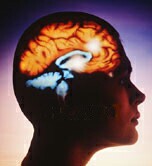Unique connectivity patterns identify potential depression switch in tx-resistant depression
THURSDAY, Oct. 1, 2015 (HealthDay News) — A “depression switch” has been mapped during intraoperative deep brain stimulation of the subcallosal cingulate, according to research published online Sept. 26 in JAMA Neurology.
Ki Sueng Choi, Ph.D., from the Emory University School of Medicine in Atlanta, and colleagues characterized the structural connectivity correlates of deep brain stimulation-evoked behavior effects using probabilistic tractography in depression. Data were included for nine adults undergoing deep brain stimulation implantation surgery for chronic treatment-resistant depression.
The researchers recorded 72 active and 36 sham trials among the patients. Stereotypical behavior patterns included changes in interoceptive and in exteroceptive awareness. For all nine patients, the best response was a combination of exteroceptive and interoceptive changes at a single left contact. The best response contacts had a pattern of connections to the bilateral ventromedial frontal cortex (via forceps minor and left uncinate fasciculus) and to the cingulate cortex (via left cingulum bundle); only cingulate involvement was seen in behaviorally salient but non-best contacts.
“This analysis of transient behavior changes during intraoperative deep brain stimulation of the subcallosal cingulate and the subsequent identification of unique connectivity patterns may provide a biomarker of a rapid-onset depression switch to guide surgical implantation and to refine and optimize algorithms for the selection of contacts in long-term stimulation for treatment-resistant depression,” the authors write.
Two authors disclosed financial ties to medical device companies, including Medtronic and St. Jude Medical, both of which develop products related to the research in this article. St. Jude Medical also donated the study device.
Copyright © 2015 HealthDay. All rights reserved.








